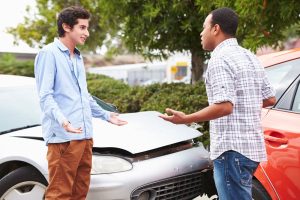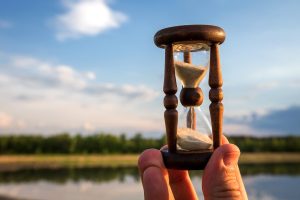When we think of claiming compensation for injuries caused by animals, the vast majority of us will automatically think of dog attacks. The reality is there are many different types of animals which have been the subject of compensation claims due to the action/inaction of their owner/handler. Proving negligence is not always straightforward and will depend upon the particular scenario and specific obligations for various parties.
Animals Act 1971
Firstly we will look at animal owners/handlers and their legal obligations under the Animals Act 1971. In simple terms the owner/handler at the time is legally obliged to ensure the safety of those in the immediate vicinity. In the event of an animal attack, causing injury and even mental distress, there may well be a claim for negligence and ultimately liability may be proven. In reality, the Animals Act 1971 relates to issues of common sense; if you have an animal in your control then it is simply up to you to control it.
Health and Safety at Work Act 1974
When looking towards stables, zoos and other animal related venues, the Health and Safety at Work Act 1974 is the umbrella act which ensures the safety of employees and visitors to any establishment. There are other acts which are more specific towards animals and their treatment but in reality all employers have an obligation to ensure the well-being of their employees. When it comes to stables, zoos, etc these obligations include:-
- Ongoing training
- Specific training for dangerous situations
- Provision of safety clothing and safety equipment
- Constant risk assessments
- Matching experienced personnel with dangerous animals
- Ensuring the upkeep of animal housing and exercise areas
- Provision of safety signage
As with any employee/employer situation, it makes no difference whether the role is salaried or volunteer only. We specifically bring this subject up because many young adults will seek to work with animals in stables and zoos to gain experience. Their protections are not impacted in any way shape or form if this assistance is given free of charge.
Legal obligation of individuals
At this point it is also worth noting that employees/volunteers also have an obligation to take note of safety signage and safety advice. In the majority of cases, where injuries have been received as a consequence of an animal attack, if the individual failed to take notice of prominent safety signage and safety advice, this could severely weaken any compensation claim. Alternatively, no matter how persistent an individual was to enter for example a lion enclosure, there should be no way for the general public to gain access. This is an extreme scenario but it does give you an idea of specific legal obligations.
While it is recognised that those working in stables, zoos and other situations where animals are involved do often operate under a greater degree of risk, this does not exempt employers from legal action. However, if the employer is able to prove they took sufficient action to protect individuals then this could mitigate or even lead to a dismissal of compensation claims against them.
Dog attacks
Aside from the fact there are legal acts in place which protect individuals from so-called “dangerous dogs”, all dog handlers have an obligation to protect those in the immediate vicinity (people and other animals). Some of the more common incidents relating to dog attacks include:-
- Physical injuries
- Damage to property
- Psychological injuries
- Accidents caused by uncontrolled dogs
While some defendants may argue that individuals should not have approached an animal, this is not always easy to avoid especially in relatively confined spaces. There are obviously ways and means in which handlers can defuse a potentially dangerous situation which include:-
- Using special safety harnesses/muzzles
- Stepping aside until others pass
- Ensuring the dog is restrained
- Avoiding congested/busy areas
Some dog lovers may suggest that it is impossible to avoid congested areas or step aside while others pass through, but surely handlers would prefer a quiet ramble with their dog? Many people fail to recognise that these unfortunate situations, in which attacks can occur, will also be traumatic for the animals involved. At this point it is also worth noting that fights between individual/packs of dogs are also covered by the above legislation with regards to the control of animals.
Our page here explains how to claim compensation if you have been bitten by a dog.
Cow attacks
You may be surprised to learn that cow attacks are fairly common with many people killed by these large animals. The types of attack tend to be split between public and farmworkers with the vast majority including those working on farm premises. Unfortunately, the vast majority of cases involving the general public tend to involve cows with calves and their ultra-protective nature. There are a number of issues to take into consideration with regard to this type of attack:-
- Walkers should take notice of warning signs
- Farmers should not locate cows and calves next to public walkways
- Protective fencing, walls and gates should be well maintained
There is still an obligation for individuals to use common sense and refrain from entering fields where cattle are grazing, especially if they have a dog. As we touched on above, much of the action that can be taken to protect individuals from animal attacks is basic common sense.
Horse related injuries
Whether you are working in a stable, learning at a riding school or use horses in your general working day, there are various legal protections in place. While the specific protections will depend upon the environment and how the animals are being worked there are many aspects to consider.
Riding schools
There is an enhanced degree of risk when riding and being in the vicinity of animals such as horses. When it comes to riding schools there are various situations which can arise and need to be addressed.
- Ensuring the health and well-being of the animal to avoid unexpected aggression
- Matching horse characteristics with customers at riding schools
- Maintaining exercise areas and stables
- Providing the appropriate tack and safety equipment
- Displaying important safety signage
- Providing the relevant training for staff and customers
In isolation each of these issues will have a positive impact on the overall environment but the cumulative impact can be huge.
Stables
The idea of working with horses at stables tends to attract a variety of horse enthusiasts many of whom will give their time free of charge. Whether or not the individual is salaried or offer their services free of charge matters not a jot. Employers/stable owners have the same obligations regarding health and safety to any individuals working for them. These obligations include:-
- Health checks for horses to avoid uncommon aggression
- Regular exercise for the horses to maintain fitness
- Limiting access to strong willed/aggressive animals
- Ensuring all equipment is fit for purpose
- Providing safety equipment
- Constant training of staff
There are two main themes when it comes to horse riding accidents and injuries caused by these relatively large beasts. Firstly, there is a legal obligation on the owner of the animal to ensure its well-being with regular medical checks. Secondly, training is vital for stable hands, those attending riding schools and the actual horses.
We have a page explaining how to start a compensation claim if you have been injured in a horse riding accident.
Other animal attacks
While dogs, horses and cows are among some of the animals more commonly involved in attacks on individuals and other animals, this list is by no means exclusive. Other animals often involved include:-
- Cats
- Birds
- Snakes
- Mice/rats
In reality, any animal which could be kept as a pet or those living outside on private land could potentially be involved in attacks leading to injuries.
Risk of disease
Whether you have been attacked by a dog, horse or other animal, even if the initial prognosis is relatively minor, there is often an increased risk of disease. Rabies is obviously the most prominent animal related disease which springs to mind but this is actually one of many. As a consequence, it is very important that you are checked for infections in the immediate aftermath of an attack. In some cases it may take months to be 100% sure there has been no infection but doctors will advise you of the specifics.
Pursuing compensation
If you are pursuing compensation for injuries received from an animal it is your obligation to prove beyond reasonable doubt there had been negligence on behalf of one or more third parties. This may be something as simple as a dog owner not in full control of their animal, cows and calves next to public highways/byways or horses kept in an unsafe environment leading to aggression. Important evidence may include:-
- Medical records
- Witness statements
- Photographic evidence
- Police statements
- Evidence of historic similar incidents
A defendant would look to prove that there were sufficient warning signs and as much precaution as possible was taken to avoid such incidents. It is therefore vital that you take professional advice from personal injury claims advisers to structure your claim, collate your evidence and present it in the most advantageous light.
Helping to avoid repeat offences
We can only estimate the number of animal attacks which have resulted in injuries where legal action has not been pursued. It is very easy to err on the side of caution and accept that the owner/handler did all they could to prevent such an incident. Unless legal action is sought there is evidence to suggest that this type of negligent behaviour may continue.
It is much easier to look at accidents in the workplace and the positive impact that compensation claims can have regarding changes in procedures than to pursue the owner/handler of a beloved pet. The problem is that unpunished instances of negligent behaviour with animals could lead to more serious injuries and in some cases deaths in the future. The only way to encourage change is to make sure that guilty parties accept their responsibilities and amend their ways.
Summary
Whether looking at dogs, horses, cows or any other type of animal, it can be very difficult for animal lovers to accept that other “animal lovers” may have acted negligently. The truth is there are obligations with regards to handlers/owners as well as other third parties who may come into contact with a range of different animals. However, the bottom line is that the Animals Act 1971 places a legal responsibility on handlers/owners to ensure the well-being of other parties.



